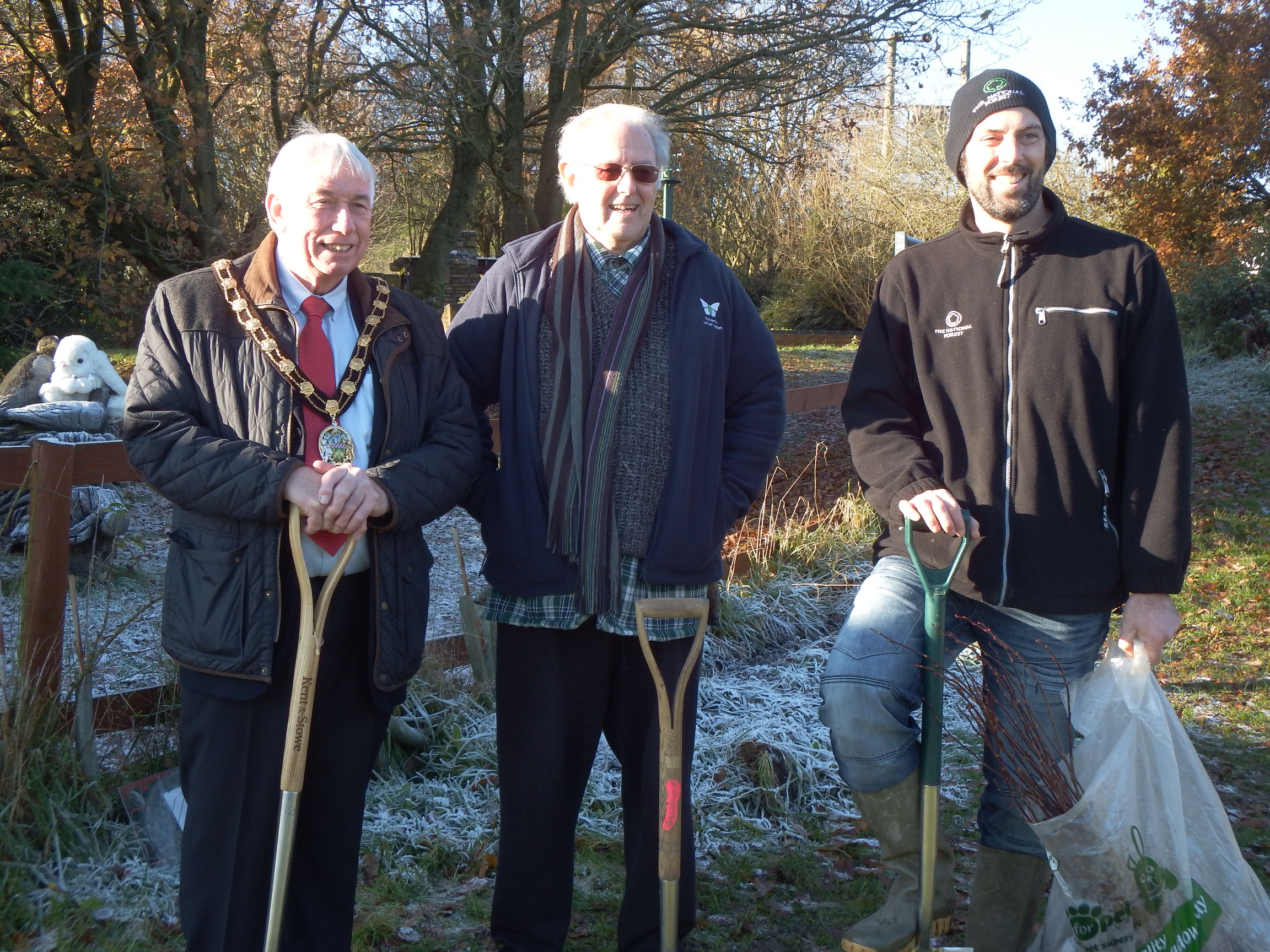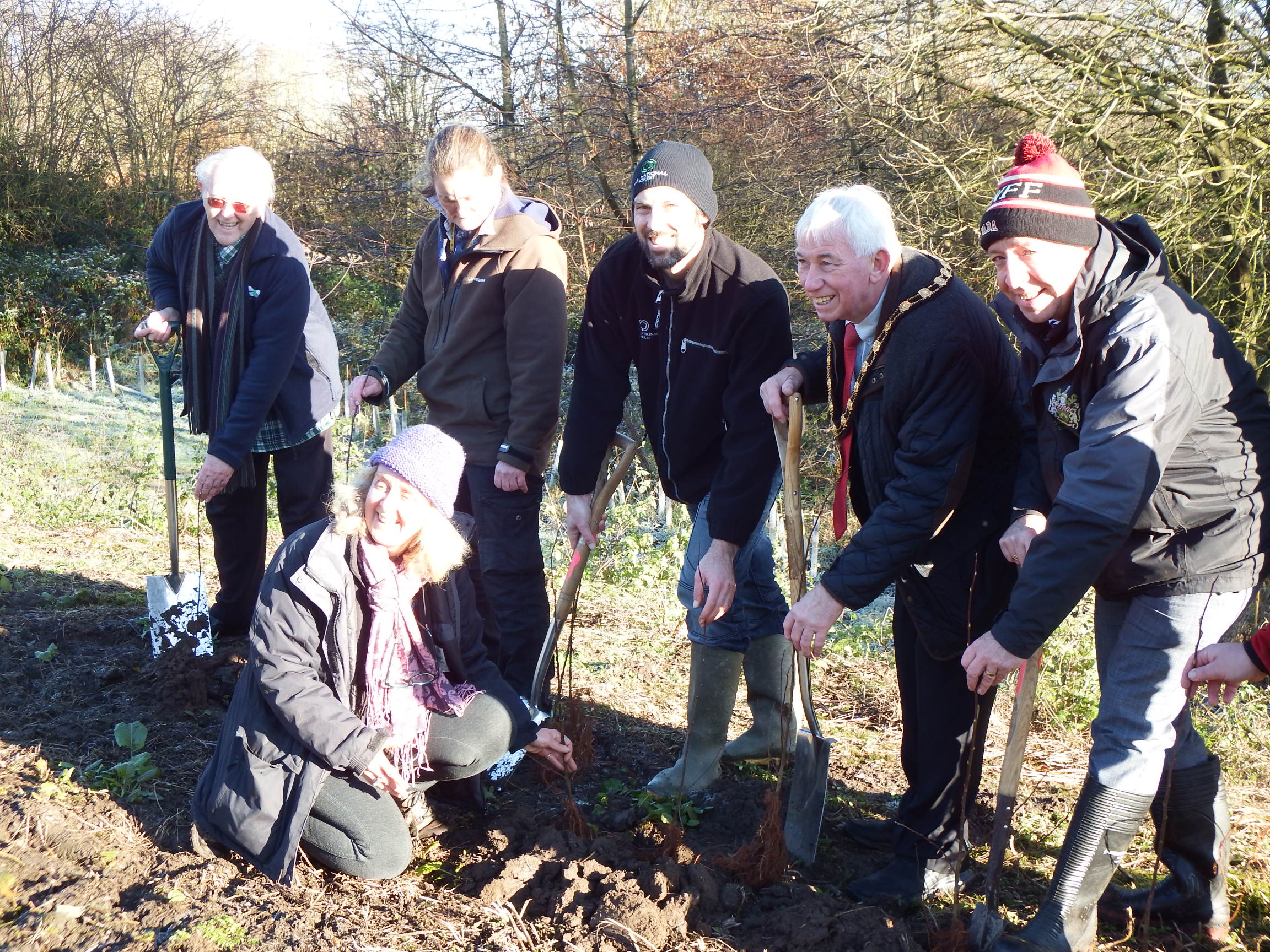
AN IMPERIAL INVASION – BRINGING THE PURPLE EMPEROR TO DERBYSHIRE
Butterfly Conservation’s East Midlands branch (EMBC) has teamed up with South Derbyshire County Council (SDDC) to buy Willow trees that will help create the habitat preferred by the Purple Emperor butterfly and promote this spectacular species’ steady march northwards through our region into Derbyshire.
This large and magnificent butterfly (dubbed His Imperial Majesty!) has been getting ever closer by colonising woodland in adjoining counties, and on 30 November a batch of Willow plants (two-year old Sallow ‘whips’) were planted at the National Forest’s Rosliston headquarters. This jointly funded project, which was the brainchild of Derbyshire Butterfly Recorder Ken Orpe, has involved the purchase of 575 of the Sallow whips.
Over the autumn, a number of local organisations and companies signed up to the project by each taking a quantity of the Sallow whips and pledging to plant them at specific sites thought likely to attract the Purple Emperor. These include the National Trust, Forestry England, the National Forest Co, Severn Trent Water, the Woodland Trust, Derby College, Lubrizol, Toyota, St Modwen Homes and several regional councils in Derbyshire as well as a few private site owners.
The event at Rosliston saw representatives of some of these organisations get together, complete with spades, to plant some of the whips ahead of a broader mass planting by their own organisations in the coming weeks. Councillor Sean Bambrick, Chair of South Derbyshire District Council, was the first to break turf on the day.

Other guests of honour at the planting included a group of young children from Rosliston Primary School, who had developed their own nature project and turned up with various attractively crafted items reflecting the beauty of the Purple Emperor.

It is well known that the adult Purple Emperors like to lay their eggs on Willow plants as the first step on the long life cycle of the next generation. There are dozens of varieties of Willow, but the Purple Emperor seems to prefer the broad-leaved Goat Willow type, though eggs and larvae have been discovered on other varieties, notably Grey Willow. Both types are being supplied as two-year whips, though it’s likely it will be another three years before the trees are mature enough to serve as a foundation for the hungry caterpillars.
The Purple Emperor is primarily a woodland species, and it likes mature trees on and around which to display, although it has been seen in a wider range of habitats in recent years. As the male butterfly gravitates to ‘observation posts’ high up in woods, planting the Sallows in these elevated areas close to mature territorial trees is advisable.
Adults are on the wing from mid-June to early August. Eggs are laid late July/early August, and the early larval stages are eating until early November; during this period growth is quite slow, reaching only around 10mm before hibernation, when they could fall prey to predators so they usually take up position by a bud, a twig junction or a cleft in the Sallow’s branch where they remain camouflaged.

But as soon as the Sallow buds open in the spring, the larvae begin eating voraciously and quickly grow during April and May, often quadrupling in size. Pupae form over three weeks from late May to mid-June, with emergence of the adult butterflies taking a similar time – males usually before females.
Ken adds: “As a result of Climate Change, the Purple Emperor, one of the most iconic British butterflies, has moved north from southern England during the last few years and it is now established at some woodland sites in North-west Leicestershire.
“In order to help the butterfly to get established in South Derbyshire, EMBC formed the joint venture with SDDC, together with a number of other organisations and landowners to plant Willows – the larval food plant for their caterpillars – along woodland sites in South Derbyshire. By carrying out this conservation work we are extremely hopeful that‘His imperial Majesty’will grace our woodlands for the first time very soon!”
04/12/2023